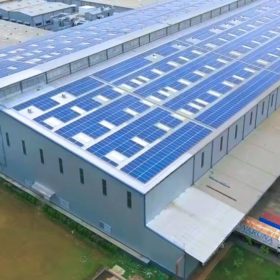Intersolar India highlights challenges, opportunities of residential PV market
This week’s Intersolar India 2017 in Mumbai, which ran from Tuesday to Thursday at the Bombay Exhibition Centre (BEC), highlighted both the potential and the challenges of India’s vast residential PV market. Everything from policy to unique environmental challenges and installation processes was discussed.
Interview: REC talks rooftop solar and quality focus in India
Milan Koev, REC Group’s Vice President Sales & Marketing APAC, speaks to pv magazine about the potential of India’s rooftop solar market.
Australia: November’s rooftop record, large C&I, storage still to come
A major milestone was surpassed in the Australian PV market last month, indicating that the rooftop solar sector is in robust health. However, not tracked in the figures underlying the record are large commercial rooftops and distributed battery storage, and reports are that here too strong growth is being achieved.
EIA: US solar output increases 47% in 2017
The latest monthly report from the Department of Energy’s Energy Information Agency shows that U.S. PV output in the first nine months of 2017 grew 47% over the same period in 2016, with market growth across the nation. PV represented 1.9% of total generation during this period.
Switzerland to replace FITs with solar rebates in 2018
According to Swissolar, this change will allow more PV capacity to be deployed, as waiting times for the implementation of FIT contracts are considerably increasing. Self-consumption is also becoming more attractive for multi-family houses and commercial enterprises.
Slovakia’s Green Houses Program has €13 million 2018 budget
The scheme grants incentives for the installation of solar water heaters, PV systems up to 10 kW, heat pumps and small windmills.
Lithuania raises net metering size limit for businesses and farmers
Prior to the introduction of the new provisions, only public institutions were entitled to install PV systems between 10 and 100 kW. The 10 kW limit will remain for private citizens, however.
Thailand’s bigger RE ambitions may lead to economic renaissance – IRENA
Increasing the role of solar PV in its energy mix from 6 GW to almost 17 GW is one of IRENA’s key recommendations for Thailand. Noting that RE national targets could be comfortably surpassed by a quarter to reach more than 37% by 2036, its report finds more ambitious deployment could save over US$9 billion annually, proving to be a major turning point for the entire economy.
India installs 1,861 MW rooftop PV, Maharashtra leads the market
India has installed total 1,861 MW rooftop PV as of September 2017 as the state of Maharashtra overtakes Tamil Nadu to become largest for rooftop solar, as per latest report by Bridge to India. Analysts have revised India’s rooftop projection to 10.8 GW by 2021.
Argentina grants final approval for new distributed generation law
Under the new rules, which are expected to come into force in the first quarter of 2018, owners of residential and commercial PV systems will be allowed to sell excess power to the grid under a net metering mechanism.










